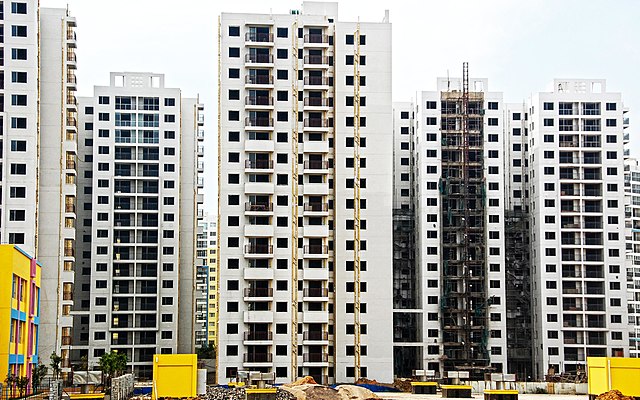
Why China Can’t Pull the World Out of a New Great Depression
By F. William Engdahl
16 May 2023
Over the past two decades since China was admitted into the WTO, its national industrial base has made unprecedented strides to emerge as the world’s leading economic producer in many major areas. The academic debates over whether China’s GDP is larger than that of the USA are misplaced. GDP is largely worthless as a measure of a real economy. When measured in real physical economic production, China has left the USA and everyone else in the dust. Therefore, the future course of industrial production in China is vital to the future of the world economy. Globalization of the world economy made it so.
Steel production is still the single best indicator of a growing real economy. In 2021, China produced more that twelve times the tonnage steel as the USA, over one billion tons. The USA, once world leader, managed a piddly 86 million tons. In tons of coal, China produces some 50% of world total coal. She controls 70% of world rare earth mining and over 90% of its processing, thanks to bizarre US policy actions going back several decades. China today is far the world’s largest motor vehicle producer, almost three times the size of the US at 27 million units annually, one third of world total in 2022. China is by far the largest producer of the essential cement for construction, and is the world’s leading aluminum producer. At 40 million tons in 2022, this compares to not even one million tons in the USA. It is also the world’s largest copper consumer. The list goes on.
This is merely to suggest how essential the economy of China has been to world economic growth over the past two decades. A mere four decades ago China was insignificant in world real economic terms. So, if China goes into deep economic contraction, the effect this time will be global. And this is just what is now underway. Important to note, the contraction began well before the severe three-years of China’s zero covid lockdown. Simply put, China since the so-called Great Financial Crisis of 2008 managed to create a financial bubble the size of which the world has never before experienced. That bubble began to deflate, beginning in real estate, around 2019. The scale is systemic and is only beginning.
Colossal Deleveraging and Hidden Debt
A huge problem with China’s economic model over the past two decades has been the fact that it has been a debt-based finance model massively concentrated on real estate speculation beyond what the economy can digest.
Fully 25 to 30% of the total Chinese GDP is from real estate investment in homes, apartments, offices. That’s significant. The problem is that real estate, especially apartments in China, for more than two decades, appeared to be a guaranteed money maker for owners as well as builders and banks and above all, local government officials. Prices rose annually in the double digits, sometimes by 20%. Millions of middle-class Chinese bought not just one, but two or more apartments, using the second as investment for future retirement. China’s land is owned by the Communist Party, at the local level. It is leased long-term to construction firms who then borrow to build.
Here it gets murky. For CP local government officials, revenue from local real estate land leasing and their infrastructure projects is their major revenue source. Until now municipal property taxes are forbidden despite a huge pressure from local officials.
In the months of 2018 and 2019 China real estate prices peaked. Since then they have been in a prolonged decline. China has a unique and very abuse-prone real estate model. Typically a buyer must pre-pay the full purchase price when a developer has merely begun the construction. “Buy today as the price will be even more tomorrow” was the mantra. He takes a mortgage, usually from local banks, to do that. If the builder does not complete on time, the buyer must still pay their mortgage. Even if the developer goes bankrupt as is now happening, leaving abandoned unfinished housing behind. No other country uses that model. Typically in Western countries a small deposit on a home to reserve until completion is enough. The mortgage comes when the property is finished. Not in China.
So long as China home prices were constantly rising, it seemingly worked and the home market expanded. When that price inflation stopped, for a variety of reasons, and exacerbated by the ultra-severe covid lockdowns, what was then a colossal real estate bubble began to implode. According to economist Robert Pettis at Beijing University, “Since the beginning of the property crisis in September and October 2021, property prices have declined in more than two-thirds of China’s seventy largest cities (and probably all of the smaller ones), while, more importantly, sales of new apartments this year (2022) have collapsed.”
The major turn took place in 2021 with the default of China Evergrande Group on its dollar bonds. It was then the world’s most indebted real estate conglomerate with debts of well over $300 billion. In 2018 Evergrande was deemed, “the most valuable real estate group in the world,” according to Wikipedia. That was on paper. By time of default it also owned theme parks, an EV auto company, resorts and enough land to house 10 million people. Until Beijing refused to bailout Evergrande, in a belated bid to cool the bubble, Chinese lenders had made loans based on the assumption that large borrowers would be bailed out—Too Big To Fail. Beijing learned all the wrong lessons from US banks after Lehman Bros.
It came out that Evergrande had created a colossal Ponzi fraud over the years. They were not unique. Following a speculative property boom after 2010, poorly-regulated local governments across China turned increasingly to real estate to boost income and fulfill the Beijing GDP growth targets, a de facto monetary version of Soviet central planning. Inflating local real estate values was a way of meeting local GDP targets. Local officials were given their share of annual GDP contribution to be met. Real estate became the ideal vehicle to meet GDP targets and generate local revenues. As long as prices were rising, banks and increasingly unregulated local “shadow banks” joined in the “win-win” bonanza. According to the South China Morning Post, by 2020 and the start of covid severe lockdowns, land sales and real estate taxes’ contribution to local government fiscal revenue reached a peak of 37.6 per cent.
The Evergrande partial default set off a panic in China real estate that officials desperately, and unsuccessfully, have tried to control. It was merely the first major casualty in what is a systemic meltdown. Beijing authorities imposed sharp limits on real estate lending in a vain attempt to contain the implosion, the so-called Three Red Lines. That made the implosion of the property bubble worse. In 2022 China new home sales plunged 22% over 2021. As of February 2023, China home prices had fallen for 16 straight months. Sales by the country’s top 100 developers last year were only 60% of 2021 levels. Land sales, which typically account for more than 40% of local government revenue, have collapsed.
Empty Houses and unemployment rising
Until the bubble began to burst in 2022 with the Evergrande default, Chinese real estate prices had risen several times higher, relative to household income, than in the USA. More alarming, two decades of rampant price inflation had created literal ghost cities and millions of empty apartments. As of 2021 an estimated 65 million apartments in China were empty, enough to house the French nation. This was a result of two decades or more of municipalities and developers building beyond actual demand, as citizens bought for investment, not living. One estimate is that between one-fifth and one-quarter of the total China housing stock, especially in more desirable cities, was owned by speculative buyers who had no intention of living in them or renting them out. In Chinese culture, a used apartment is considered unattractive. With falling prices, these homes become unpayable.
The unprecedented 3-year covid lockdowns that ended abruptly last December did not help matters. Thousands of foreign manufacturers including Apple, Foxconn, Samsung and Sony, have begun to leave China for other locations in Asia or even Mexico, fueling a growing unemployment crisis which feeds the housing crisis in a self-feeding cycle.
As a result of this slow-motion implosion across China, for the first time since the great expansion unemployment is becoming very serious. This March, youth unemployment officially was over 20%. Millions of recent university graduates are unable to find work and Beijing has begun to send them to work in the rural countryside, reminiscent of the Mao era. This bodes ill for future home sales. A contracting bubble has a vicious dynamic.
Until about the time of the 2008 Beijing Olympics, real estate investment was largely productive. It filled a huge deficit in quality housing as a new middle class grew more affluent. After about 2010 that began to shift to bubble status as millions of middle-class and rich Chinese began to buy second and even third homes for pure speculation as prices were rising in double digits. The degree of central supervision of local government finances was loose.
Over recent years, to avoid central clampdown by Beijing authorities fearful of a new debt bubble imploding, local governments, often with hidden collusion from the giant state banks, created a non-bank economy, “shadow banks,” all off-balance sheet. As one result, despite actions by Beijing regulators to control the property meltdown and prevent contagion, total debt, public and private, in China by February 2023 according to Bloomberg reached an alarming 280% of GDP.
Commodity.com reports total state debt of China in 2023 is more than $9.4 trillion. But that excluded local government financing vehicles (LGFVs). Chinese local governments rely on off-balance sheet LGFVs to raise funds for local public construction—housing, high-speed rails, ports, airports. The debts of all these LGFVs are estimated to be roughly $27 trillion more. The official figure for total state debt also excluded debt of state banks and state companies, which is also clearly considerable, but unpublished. That total debt is also without the unknown size of local shadow banks which China’s National Institute of Finance and Development in 2018 estimated at some $6 trillion more. The result of all these omissions is a headline figure meant to reassure Western financial markets that China has manageable public and private debt. It doesn’t. All told, very roughly we can calculate a mammoth debt accumulation of well more than $42 trillion, a staggering sum for an economy which only three decades ago was at a level of an underdeveloped economy.
A major vehicle used to finance local budgets is unguaranteed and largely unregulated municipal investment bonds. Unlike traditional municipal debt in western countries, the Chinese local LGFVs are not able to use tax revenues to fund their bond interest or principal payments. So, local governments would tap into a growing housing market by leasing their long-term land to developers to fund their bond payments. This created a system where a sustained fall in housing construction, sales and prices now creates a systemic threat. This is now underway across China. In just two decades China has created the world’s second largest corporate debt market behind the USA, and far the most of that is in unregulated municipal bond debt.
As a result of this unique mixing of local governmental fiscal policies with local housing markets, a substantial drop in housing or land prices has greatly increased the risk level of local government default on its debts. In July 2022 Zunyi City in Guizhou defaulted on a major bond, leading to a collapse of the entire unregulated local bond market, as local bond issuance collapsed by 85% after that. The bonds were a way to refinance local debt and that channel now is all but closed, despite Beijing liquidity injections early 2023. Investors were mostly local ordinary Chinese seeking to earn on savings. This past April officials of Guiyang, also in Guizhou, told Beijing it was unable to finance its debts accumulated over a decade in construction projects including housing. This opens the next phase of debt implosion. Several China municipalities reportedly have been slashing wages, cutting transportation services and reducing fuel subsidies in a desperate bid to avoid default.
National Security redefined
Transparency of financial data has always been a problem in China. Thirty years ago the country had no developed financial markets. So long as the economy was expanding however, it was not a priority. Now it is, but too late.
A signal of how severe the situation is becoming, the Beijing authorities have begun to limit release of local and corporate financial data to foreign firms, calling it a “national security” issue.
On May 9 Bloomberg reported, “China’s crackdown on data access to overseas firms is adding to concerns about how Beijing controls the flow of information in the country, making it difficult for investors to assess the state of the economy.” Information such as academic papers, court judgments, official biographies of politicians, and bond market transactions are affected, they report. US consultancy Bain &Co. had their China offices raided recently as part of the national data security campaign. Such measures may keep reality from the pages of the Wall Street Journal or CNBC for a while, but the underlying reality of the collapse of the world’s largest financial edifice will be more difficult to hide.
This May, Dalian Wanda Group, another major Chinese real estate conglomerate with investments in US cinema chains, Australian real estate and beyond, revealed talks with its major bankers to restructure huge debts amid a liquidity crisis. The UK Financial Times on May 9 reported that hopes of a post-covid China recovery are vanishing: “Chinese iron ore prices dropped to their lowest levels in five months, as weak demand adds to evidence that the country’s economic rebound from tough coronavirus lockdowns may be faltering… the optimism and activity that followed the end of lockdown have waned, leading to a ‘collapse’ in the steel market.”
This all means the prospect of the Chinese economy being a growth locomotive to lift the rest of the world from looming depression is virtually nil at this point. The massive Belt and Road Initiative is mired in hundreds of billions of dollars in loans to countries unable to service the debt, as world interest rates rise and growth stalls. Attempts to boost domestic China growth by relying on a consumer boom are doomed presently for obvious reasons noted, as is the call by Xi Jinping to make 5G, AI and such technologies the basis of a new boom, as US sanctions greatly hamper China IT advances.




